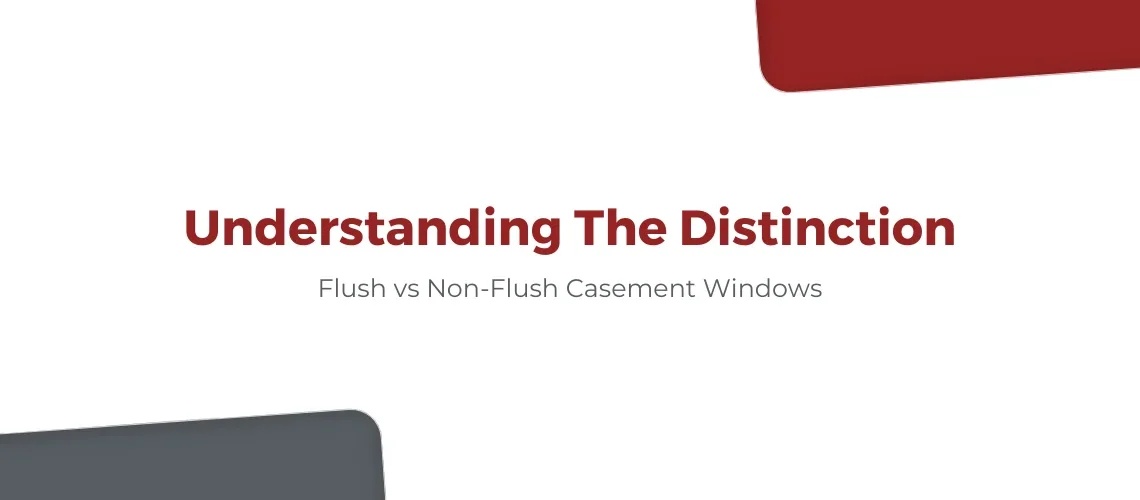In regard to any architectural design, windows are a vital factor. Supplying natural light, ventilation, and aesthetic appeal. When it comes to Casement Windows, one common choice homeowners face is whether to opt for flush or non-flush designs. Understanding the difference between these two options is crucial for making an informed decision that aligns with your preferences and requirements. In this article, we’ll delve into the disparities between flush vs non-flush Casement Windows, highlighting their distinctive features and benefits.
Flush Casement Windows
Flush Casement Windows, as the name suggests, are characterised by their sleek, contemporary appearance. In this design, the sash sits flush with the outer frame when closed, creating a seamless and flat surface. The absence of any overlapping elements results in a clean, minimalist aesthetic that suits modern architectural styles.
Key Features & Benefits
Streamlined Appearance
The primary advantage of flush Casement Windows is their ability to blend harmoniously with the building’s facade. The absence of protruding sashes or overlapping frames creates a uniform and uncluttered look, enhancing the overall aesthetic appeal.
Modern & Contemporary Appeal
Flush Casement Windows are particularly popular in contemporary and modern architectural designs. Their clean lines and seamless integration contribute to a sophisticated and sleek appearance, making them an excellent choice for those seeking a minimalist look.
Enhanced Energy Efficiency
Flush Casement Windows often feature advanced sealing and insulation technologies, ensuring improved energy efficiency. The snug fit of the sash against the frame minimises air leakage and heat transfer, thereby reducing energy consumption and enhancing thermal comfort.
Non-Flush Casement Windows
Non-flush Casement Windows, also known as lipped Casement Windows, offer a more traditional and classic appearance. In this design, the sash overlaps the outer frame when closed, creating a distinctive lip or ledge around the window perimeter.
Key Features & Benefits
Timeless Charm
Non-flush Casement Windows exude a traditional charm that complements various architectural styles, including Victorian, Georgian, and cottage-style homes. The visible lip adds character and depth to the windows, enhancing the overall visual appeal.
Enhanced Weather Resistance
The overlapping design of non-flush casement windows provides an additional barrier against wind, rain, and drafts. The lip acts as a protective shield, diverting water away from the window and preventing water ingress, ensuring greater weather resistance.
Versatile Hardware Options
Non-flush Casement Windows offer a wide range of hardware options, including traditional-style handles, stays, and fasteners. These elements can be chosen to complement the overall design theme, allowing for customisation and personalisation.
Choosing between flush vs non-flush Casement Windows depends on your personal preferences, architectural style, and desired aesthetic outcome.
While flush Casement Windows offer a contemporary and minimalist appeal with streamlined features, non-flush Casement Windows provide a traditional charm and enhanced weather resistance.
By understanding the unique characteristics and benefits of each option, you can make an informed decision that perfectly suits your needs, allowing you to create a visually appealing and practical space that you can appreciate for years to come.
Take a look at our website or contact us today!

